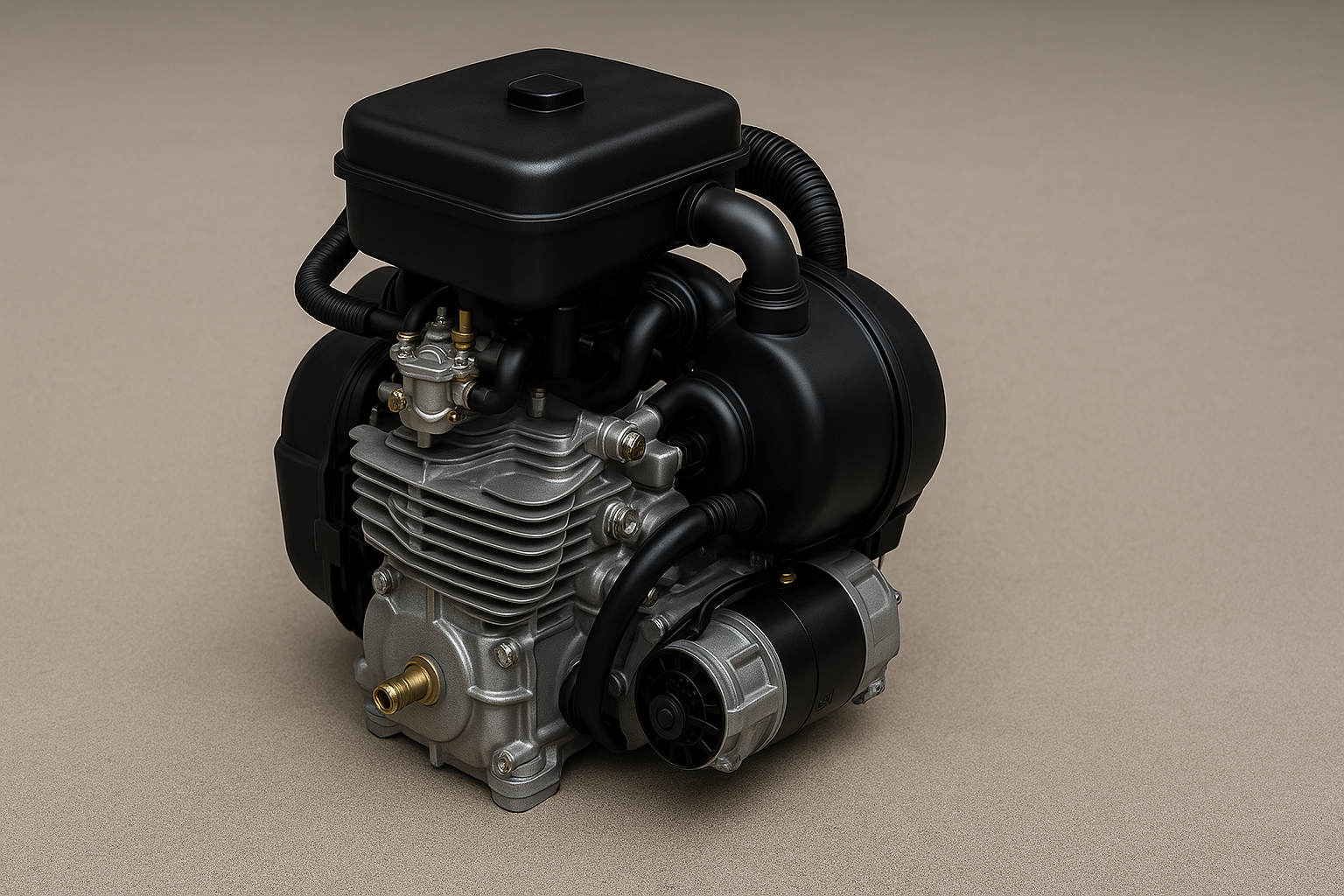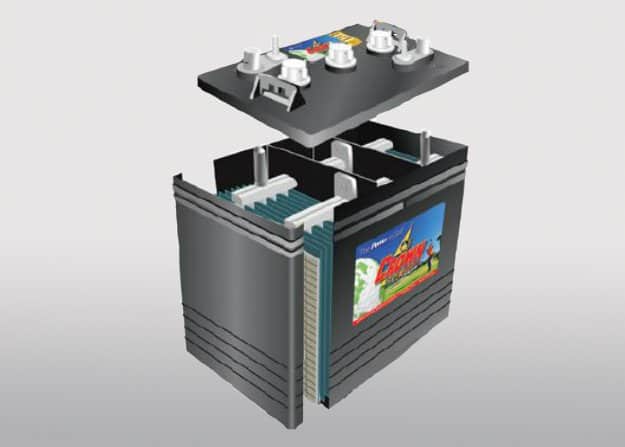Golf cart engines help your cart move and do the work you want it to do. Whether you’re driving across a golf course, through the woods, or across a neighborhood, the engine is what keeps it all running. But not all golf cart engines are the same. Some run on gas. Others use electric motors. Some people even swap their engines to make them faster or stronger. Brands like EZ-GO, Club Car, and Yamaha each use different types of engines that work in specific ways. If you’re searching for the best golf cart engine for performance, maintenance, hilly terrain, or long-term reliability, read on.
Key Take Aways
✅ Golf cart engines can be gas or electric, each with different parts and needs.
✅ Regular maintenance helps your golf cart engine last longer.
✅ You can upgrade or swap engines to improve speed or power.
✅ Understanding common engine problems makes fixing easier.
✅ Replacing an engine depends on budget, tools, and skill.
What Is A Golf Cart Engine?
A golf cart engine is the part of your cart that makes it move, either by burning gas or using electric power. Gas engines are small but strong. They work like tiny car engines, using pistons, spark plugs, and fuel to run. Electric golf carts use motors powered by batteries. Both types do the same job, just in different ways. For example, a Club Car gas model might use a Subaru EX40 engine, while a Yamaha electric cart could be powered by a 48V AC motor. This difference affects everything from top speed and noise to maintenance frequency and cost. Golf cart powertrains differ based on brand, terrain use, and intended performance.
What Types of Golf Cart Engines Are There?
Golf cart engines can be gas, electric, or even diesel (though diesel is rare). A gas golf cart engine runs on regular fuel and uses a combustion system. You might see these in Yamaha or EZ-GO carts. Electric golf carts have a motor and batteries instead of a gas tank. Some use 36V systems, while others use 48V or even 72V for more power. Some carts use a 2-stroke engine, which is lighter and louder. Others use 4-stroke engines, which are cleaner and more fuel-efficient. Electric motors don’t use oil or spark plugs but need charged batteries and working controllers. If you’re wondering which golf cart engine type is best for your needs—like golf course driving versus climbing hills in Arizona—consider how far you drive, the terrain, and your noise tolerance.
How Long Does A Golf Cart Engine Last?
A golf cart engine can last between 3,000 to 5,000 hours of use with good care. That means if you drive a little each day, it could work fine for 10 years or more. Gas engines tend to wear out a little faster than electric ones, especially if they aren’t maintained. Engine life depends on how you use it, where you drive it, and how often you check things like oil or battery charge. Using diagnostic apps or hour meters can help track engine health. If you’re buying a used golf cart engine, check for service history, total hours used, and whether any rebuild kits have been installed.
What Are Common Golf Cart Engine Problems And How Do I Fix Them?
Golf cart engines sometimes have trouble starting or lose power while driving. If your engine won’t start, it might be a dead battery, clogged fuel line, or a broken spark plug. Backfiring and strange noises could mean a carburetor problem or timing issue. If the cart smells like gas or leaks oil, check the gaskets or seals. For electric motors, dead batteries or broken wires can stop things from working. Tools like multimeters, OBD readers for compatible carts, or brand-specific service manuals can make troubleshooting easier. Common search terms like “golf cart won’t start,” “golf cart engine backfiring,” or “golf cart engine noise when accelerating” show how often these issues come up—and this section answers them directly.
How Do I Maintain A Golf Cart Engine?
Maintaining your golf cart engine means checking it often and fixing small problems before they get worse. For gas carts, change the oil, check the spark plugs, and clean the air filter. Make sure there’s no dirt in the carburetor. For electric carts, keep the batteries charged and clean the terminals. Wipe down any dust around the motor and make sure wires aren’t cracked or loose. Doing these small tasks helps your cart last longer and drive better. If you want to know how to maintain a golf cart engine with the least effort, keeping a monthly maintenance checklist is a simple way to stay ahead. Some owners even use maintenance log apps to track work done on their golf cart engine.
Can You Upgrade A Golf Cart Engine?
Yes, golf cart engines can be upgraded to go faster or handle hills better. For gas engines, you can add performance kits, adjust the governor, or swap in a bigger engine. Some people install Predator engines for more power. Electric carts can get high-speed motors, stronger controllers, or lithium battery conversions. Upgrades make your cart quicker or more fun to drive, but be careful—too much power can damage other parts or break local speed rules. Common upgrade searches include “best engine upgrade for EZ-GO,” “how to make a golf cart faster,” and “legal speed limits for golf cart mods.”
How Do You Replace Or Swap A Golf Cart Engine?
Replacing a golf cart engine means taking out the old one and putting in a new or used one. Some people rebuild their engine if the parts are still good. Others buy a new one if the engine is too far gone. Swapping to a different kind of engine—like a motorcycle or Predator engine—can give your cart a big boost, but it takes time, tools, and know-how.
For example, a Predator 420cc engine swap is popular among DIYers for EZ-GO TXT models. It’s not always easy, but it can be worth it if you want more power or better performance. If you’re searching for “golf cart engine swap guide,” “golf cart engine compatibility chart,” or “engine rebuild kit for Club Car,” this section gives you the basics.
Here’s a simple compatibility chart for popular makes and models:
| Make | Model | Engine Type | Stock Engine | Compatible Upgrades |
|---|---|---|---|---|
| EZ-GO | TXT | Gas | 295cc Robin | Predator 420cc, Honda GX390 |
| EZ-GO | RXV | Electric | 48V AC | High-speed motor, Navitas controller |
| Club Car | DS | Gas | Subaru EX40 | Honda GX390, 420cc clones |
| Club Car | Precedent | Electric | 48V IQ System | Navitas AC conversion, lithium battery |
| Yamaha | G16 | Gas | 357cc Yamaha | Big Block kits, 440cc engines |
| Yamaha | Drive2 | Electric | 48V AC Motor | Lithium battery, Navitas controller |
If you’re thinking about rebuilding your engine, here are some popular engine rebuild kits available by model:
Popular Golf Cart Engine Rebuild Kits:
- EZ-GO TXT (295cc / 350cc Robin engines) – Includes pistons, rings, gaskets, seals, valves, and bearings.
- Club Car DS (Subaru EX40 or KF82 engines) – Available kits include piston sets, camshafts, and full gasket kits.
- Yamaha G-Series (G1–G22) – Kits usually cover top-end rebuild parts including cylinder head, rings, and gaskets.
- Yamaha Drive2 – Rebuild kits for the EFI engine or standard gas engine include crankshaft seals, filters, and spark plugs.
Always double-check compatibility with your specific engine code before ordering. Some kits may also include upgrade options like performance camshafts or high-compression pistons.
Frequently Asked Questions
Can you put a motorcycle engine in a golf cart?
Yes, but it’s a big job. Motorcycle engines are fast and powerful, so you’ll need to make other changes to the cart too. You might need to upgrade the suspension, axles, and braking system to handle the extra speed and torque. It’s a custom project that requires mechanical skill, welding tools, and careful planning.
How much horsepower does a golf cart engine have?
Most golf carts have engines with 10 to 13 horsepower, which is plenty for golf courses and flat neighborhoods. Some performance upgrades can push that to 20 horsepower or more. Electric motors can also feel more powerful because of instant torque. If you need more pulling power or speed, an upgraded controller or gas engine swap can make a big difference.
Is electric better than gas for golf carts?
Electric carts are quieter and need less maintenance. They don’t require oil changes, and there are fewer moving parts that wear out. They’re great for short trips, smooth surfaces, and indoor use. Gas carts are stronger, can run longer without charging, and are better for hilly or rough terrain. It depends on how far you need to go, whether you’re near charging stations, and if noise matters.
How do I tell if my golf cart engine is bad?
If it won’t start, makes weird noises, or leaks oil, the engine might be worn out or broken. You might also notice a loss of power, overheating, or excessive smoke. For electric motors, symptoms could include slow acceleration, shorter battery life, or warning lights on the dash. A compression test or diagnostic scan can help confirm engine trouble.
What’s the best engine for going uphill?
What’s the best engine for going uphill?
A high-torque motor or a strong gas engine works best on hills. For electric carts, look for upgraded controllers and motors designed for torque rather than speed. Gas carts with larger displacement engines, like 420cc upgrades, provide more power for steep terrain. Also make sure the tires and drivetrain are matched for the added load.




